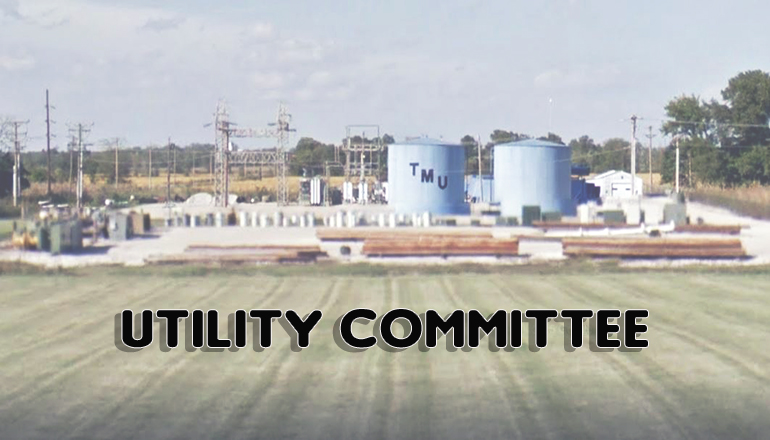The committee that oversees Trenton Municipal Utilities is recommending increases in water and sewer rates that are to be spread over five years, instead of requesting a larger percentage increase for the next two years.
The utility committee members met Tuesday evening with a representative of Toth and Associates which was hired by the city to study water and wastewater rates. The Springfield company previously suggested an option that TMU increase water rates by as much as 14.3% over the next two years. Toth and Associates also suggested increases that totaled 9% in wastewater (sewer) rates for the next three years.
During a discussion at the committee meeting, Toth representative Craig Woycheese agreed to revise his figures at the request of Councilmen Duane Urich and John Dolan.
The committee recommends to the city council, increases in water rates of 6.5% in the first year, 3.9% in the second and third years, and 1% in each of years four and five. The committee further recommends increases in sewer rates by 3% in each of the first three years followed by increases of 1% in both the fourth and fifth years.
The committee would re-evaluate water and sewer rates before the end of the fifth year and may request to forgo an increase at that time. Utility Director Ron Urton said he would like to have a rate study every five years. The goal is to increase revenues to meet project obligations, debt payments, and inflationary factors while “softening” the financial impact on customers by executing smaller increases in the next future.
The first-year increases for water and sewer rates are proposed in the study to help the utility “catch up” on cash flow and maintain adequate reserves. According to figures provided by city officials, net income for water in the just-concluded fiscal year was $546,623. If nothing was done, current revenue and budgeted expenses were projected to reduce the net to $105,367. But with the rate increase, the 2022-2023 fiscal year net revenue is estimated at $257,858.
Regarding the sewer fund, net income for the recently concluded fiscal year was $991,365. If nothing was done, current revenue and budgeted expenditures were projected to reduce the net to $886,359, but with the first-year rate increase, the net revenue would be approximately $987,516.
It was noted for both water and wastewater, individual consumers may realize a rate change above, or below, the increased percentage amounts depending upon their class of service and actual usage. Urich, who’s chairman of the committee, said he hopes the smaller incremental increases will keep the utility on what he called solid footing for the next several years. Dolan stated these are tough times so he appreciated the proposed step increases for water and sewer rates.
Department head reports were verbally presented by Bob Hutchinson, Steve Reid, Kenny Ricketts, and Brad Griffin. Hutchinson discussed equipment issues at the sewer plant, Reid reported that 40 lead samples have been obtained and sent to a lab. Ricketts discussed plans to replace a manhole at 7th Street.
Griffin announced Paden McCullough has been employed to fill a vacancy in the electric department. Ron Urton mentioned a pre-construction conference is scheduled regarding the reservoir pump station, and he said plans are being reviewed for the water plant clarifier modifications.
Comptroller Rosetta Marsh said the first month (May) of the city’s fiscal year saw gains in electric and wastewater but a loss in the water fund. She explained that all net gains go toward capital equipment and project payments along with debt payments. She also provided a cash analysis report of the three funds.
Mrs. Marsh said the new Tantalus electric AMI meters ordered will not arrive until July due to availability. Crews installed 1,755 new AMI meters with approximately 1,350 more to be swapped out over the next two years. Regarding new water meters, Mrs. Marsh said work continues getting the remaining 500 to 600 water meters to “read” as the crew is “troubleshooting” meters and pit locations.


